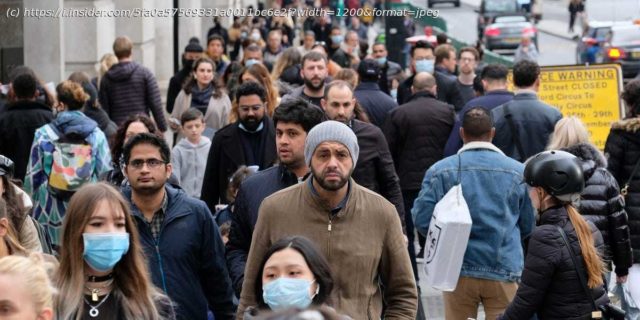When the coronavirus first reached the US and England, the countries’ largest cities reacted similarly: New York City issued a stay-at-home order on March 22, …
When the coronavirus first reached the US and England, the countries’ largest cities reacted similarly: New York City issued a stay-at-home order on March 22, and London followed suit March 26. But since then, the two cities’ pandemic trajectories have diverged. New York City was the US’s first hotspot, peaking at over 6,000 daily cases in April (though many were missed due to limited testing) and more than 500 deaths per day. At that time, London kept new cases to about 900 per day. Throughout the summer, both cities kept the virus at a simmer: London averaged dozens of new cases per day and New York a few hundred. But starting in August, London’s numbers crept – then catapulted – beyond the scope of its first outbreak. By November 5, the city averaged nearly 2,000 new cases per day. New York’s numbers, meanwhile, have stayed relatively low. By November 5, the city had 745 new cases per day, on average. Experts say London’s recent spike came because officials sent residents mixed messages, didn’t implement enough contact tracing, and quickly reopened restaurants, bars, and gyms. By contrast, once New York got its spring surge under control, it implemented widespread testing, contact tracing, and targeted lockdowns. Leaders also developed consistent messaging about necessary precautions. New York was an anomaly in that, according to David Heymann, an infectious-disease specialist at the London School of Hygiene and Tropical Medicine. « Everybody locked down without exit strategies. And when they opened up, they opened up overnight, » he told Business Insider. London reopened quickly and didn’t enforce mask-wearing People sit at Bar Elba in London on September 24,2020. Hannah McKay/Reuters New York and London are both global hubs with 8 to 9 million residents, diverse demographics, and dense apartment buildings. But whereas New York set the terms of its own lockdown, London’s response has depended mostly on guidelines set for the entire UK. London reopened several key economic sectors in step with the rest of England, even the country’s sparsely populated areas. Indoor gyms throughout England reopened on July 25 – a month before New York’s did. The country also allowed pubs and restaurants everywhere, including London, to open for indoor dining and drinking on July 4. New York waited nearly three more months — until September 30 — to allow indoor dining and still hasn’t reopened bars. The UK government even encouraged residents of England, Scotland, and Wales to frequent restaurants. In July, Rishi Sunak, head of the UK’s treasury department, announced « Eat Out to Help Out, » a plan that encouraged residents to dine at restaurants by offering them 50% discounts on Mondays, Tuesdays, and Wednesdays in August.
Home
United States
USA — Science London and New York have similar populations and density, but only one...






